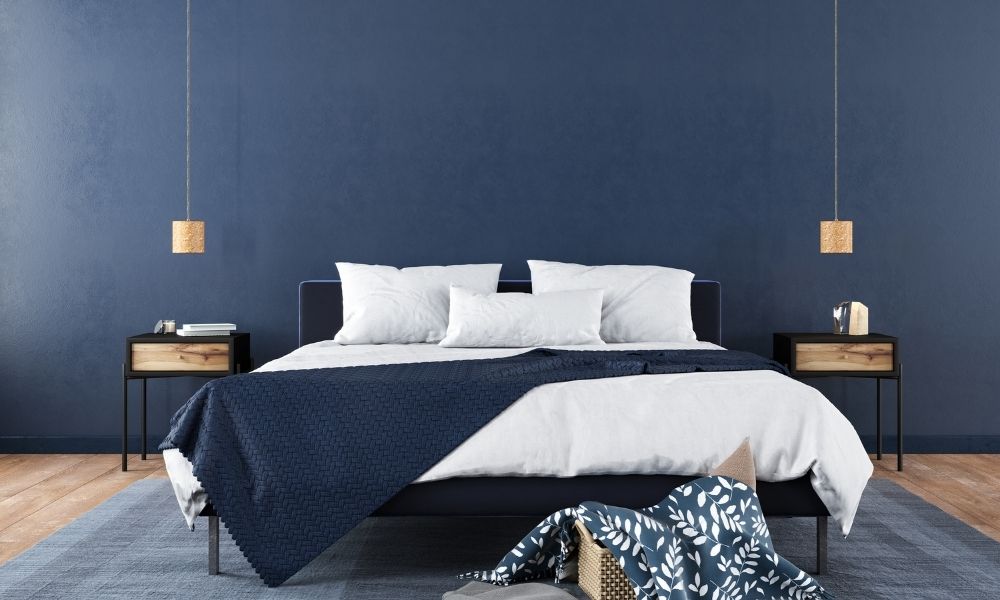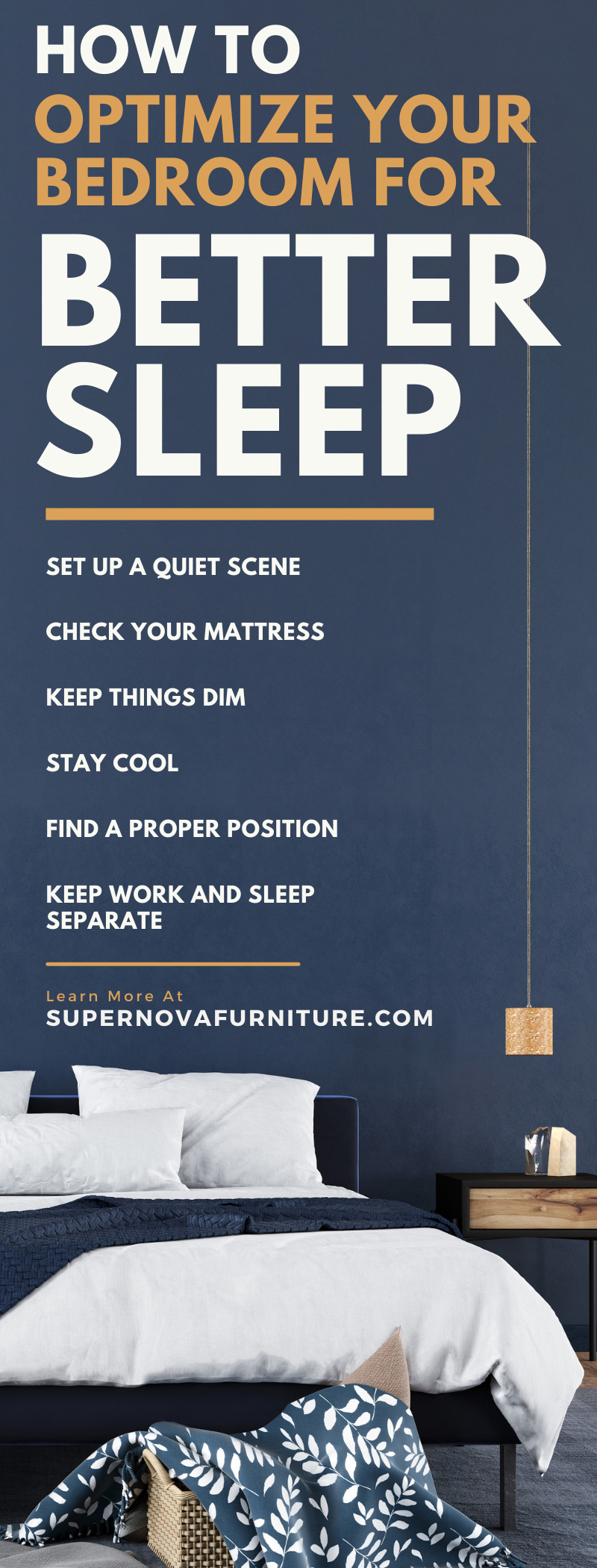
Eight solid hours is the literal dream of any fulfilling and refreshing night’s sleep, but it’s sometimes difficult to achieve. If sleeplessness persists and interferes with your quality of life, you might want to see a doctor or other healthcare professional who can recommend ways to go to sleep and stay asleep. Before you do that, however, see if the fault lies not in yourself but rather in your bedroom. Sometimes a simple change (or two, or three) in your sleeping quarters can make all the difference in grabbing a full night of shuteye. To help you get started, here’s how to optimize your bedroom for better sleep.
Set Up a Quiet Scene
First off, what’s the noise situation in your room? Are there persistent and irritating sounds inside or outside the room? Start by eliminating what you can identify and remove. Fix faucet drips, discard and replace machinery that makes persistent noise, replace smoke and carbon monoxide detector batteries, and so forth. Outdoor noises might be easily eliminated by talking with neighbors, but if there are other street sounds keeping you awake, invest in earplugs, a white noise machine, or a soothing electric fan to overwhelm the outdoor noise.
Check Your Mattress
Often you won’t be able to sleep because your mattress is on its way out. Mattresses last from six to eight years, and will become identifiably lumpy, tattered, and otherwise misshapen. When your mattress is unable to support you, you’ll know it. You’ll ache, your muscles and spine will feel stiff, and you’ll find it hard to get comfortable. Worn-out springs can creak and squeak and wake you up as well. We offer several models of mattresses, including Tempurpedic mattresses on sale in our Houston store.
Keep Things Dim
Sleep is best done in the dark. Any moderate or very bright light is present is like a signal to your brain that it’s time to wake up. Blackout curtains and shades will block the sunlight and any external lights outside your windows. Turn digital clocks and other light-emitting items away from the bed so they aren’t beaming into your eyes. Keep the door closed in case any light is reflecting in from the hallway. Finally, make your bedroom a TV, computer, and smartphone-free zone. Don’t let those bright screens beam onto your face just before bed. Again, bright lights scream, “Wake up!”
Stay Cool
Here’s one more way how to optimize your bedroom for better sleep: check the temperature. A cool bedroom is a pleasant place to sleep, and you can control the heat levels with plenty of cozy pillows and blankets. Keep the thermostat at a nice, cool 71 degrees, and make sure the sheets and blankets suit the season (flannel for winter, light cotton for summertime). Open windows can bring in lots of fresh air and cool breezes as well. Bring the temp down so you can snooze peacefully!
Keep It Clean
Never underestimate the power of a neat and clean room to put your mind at ease and create an agreeable environment for sleeping. To begin with, doing a deep clean can tire you out in a good way, driving you to finish so you can get snuggled down into those sheets and blankets. Overall, though, a clean room removes anxiety about, well, keeping it clean and leaves open a world of possibilities for the next day. Do a daily pick-up and monthly overhaul to stay on top of it. Also, take time to declutter and give your bedroom a better sense of serenity and clarity. Removing visual “noise” can put you in a calmer frame of mind.
Find a Proper Position
Humans sleep in one of three ways: on their backs, face down, or on their sides. Most people are aide sleepers, but your position changes frequently throughout the night. We’ve addressed the importance of finding a mattress that provides enough support. Now let’s figure out how you should be set up atop the mattress. Experiment with different positions and use pillows and similar materials to prop up whichever parts need more support. Pick a position and support system that removes pressure on whichever part suffers most, from your head down to your toes. And like mattresses, pillows also wear out. See if it’s time to ditch and replace a flat and lifeless pillow.
Soothing Sounds
Some folks need perfect silence to sleep, but others need a little outside stimulus. Keep a radio or music player by your bedside—covering the screen, of course—and have it softly play your favorite soft and simple tunes. Quiet classical music is a popular choice, but it’s up to you. Look for suggested playlists curated to include only sleep-inducing tunes. As mentioned above, there are all sorts of white noise and similar noise-generating apps and downloads available out there.
Set Up a Meditation Spot
Meditation is a good thing to take up no matter what time of day you choose to practice it, but doing it right before bed is a prime time. You can meditate in bed, of course, and you may even drift off after you close your eyes, clear your mind, and concentrate on your breathing. It’s a good idea, however, to set up a corner of your room as a meditation nook. Spread out a comfortable area rug, add some space for incense, candles, or similar accouterments for meditation, and take a few minutes to relax and let your cares and worries go. A little exercise or yoga beforehand can help wear you out and calm you down before turning in as well.
Keep Work and Sleep Separate
Take a look around your room. Has it become an office as well as a bedroom? Do you have work spread out everywhere, so it’s the last thing you see before turning in and the first thing you see waking up? While a small space for writing letters, reading, or otherwise pursuing hobbies and crafts is a nice addition to any bedroom, a literal workspace breaks down the barrier between your workday and the time you need to rest and recuperate. If you can’t work elsewhere, at the least pack up your projects or cover them up so you aren’t worrying about them.
Note: Check out our new store, coming soon to Rosenberg, TX.
